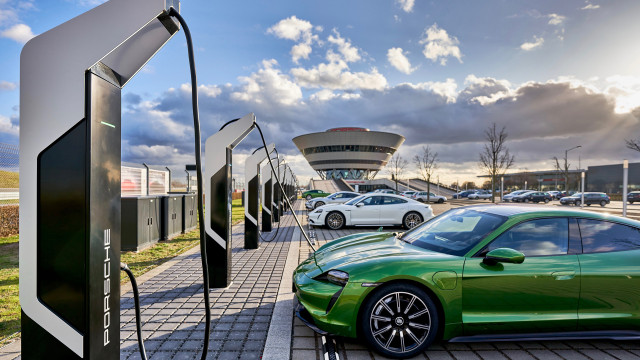Urban Mobility Is Becoming Increasingly Crucial for Sustainability
By Jack Shaw
People have always looked for better ways to get around. Transportation brings communities together and opens doors to new opportunities, so urban mobility is a leading concern as eco-friendly movements change where people live. Learn why it’s becoming increasingly crucial for sustainability and which options most help people in urban spaces.
What Is Urban Mobility?
Urban mobility promotes the ease of movement throughout a metropolitan area with resources like public vehicles and walkable spaces. The more people that can walk or use easy, reliable public transportation to get around, the more they can reduce the amount of carbon dioxide released into the atmosphere by cars burning gasoline.
Mobility can also have different definitions in each city. Depending on the area’s existing resources and challenges, urban mobility policies may address things like noise reduction, energy efficiency and the promotion of economic development with improved transportation.
Ways Urban Mobility Policies Can Improve Sustainability
Policies prioritizing urban mobility can improve an area’s eco-friendly efforts in numerous ways. Learning about the potential benefits may motivate more urban planners to push for more green mobility policies in upcoming years.
1. They Could Make Electric Vehicles Resources More Available
Although cars contribute carbon emissions to the atmosphere and worsen global warming, they’re also a standard part of daily life for many people. Research shows that 64% of Americans drive daily, which means they live in areas designed for vehicle transportation.
Urban mobility policies in those areas can work with existing infrastructure by making electric vehicles easier to use. Additional charging stations throughout a city would mean drivers could refill their cars’ batteries between uses wherever they go.
Given how 75% of interested consumers still don’t use an electric vehicle due to range concerns, urban planners adding charging stations would make their existing infrastructure more sustainable without pushing for people to leave their cars at home.
2. They Update Parking Lot Minimums
The use of parking lot minimums informed decades of traditional urban planning. They required a specific number of parking spaces around commercial buildings, leading to expansive parking lots that reduced urban mobility by creating greater distances between locations.
More sustainably minded urban mobility policies would update those minimums. People enjoy an improved quality of life when living in a rich urban fabric of businesses within walking distance of their living spaces. If zoning ordinances allowed more flexibility for parking lot designs, businesses could form closer together and optimize their parking spots closer to their buildings.
3. They May Promote Public Transportation Usage
When more people use public transportation, they leave their individual cars at home, decreasing the pollution a city creates daily. Urban mobility and sustainability policies could promote this easy way to go green by providing additional public transportation modes.
Cities don’t always have the room or existing infrastructure for major bus routes or subway tunnels. When those aren’t possible, micro-mobility vehicles become more critical. Electric scooters, mopeds, and bikes with city-sponsored green charging stations would help people get around without fossil fuels.
Participants in a poll that surveyed individuals from 10 countries said they use these transportation options 42% of the time for leisure purposes and 39% of the time for commuting. Those numbers decrease for people living outside city areas. If town governments provided micro-mobility options that support the environment, there would already be enough people interested in using them in place of gas-reliant cars.
4. They Encourage More Walkable City Projects
Cities with walkable resources make it a more appealing transportation method. People might picture a stroll through their city requiring a heavy-duty hat that protects them from ultraviolet (UV) rays and hiking boots, but only if getting around on foot takes a while. Urban planners can change that by optimizing a city’s walkability with new projects.
Creating and fortifying sidewalks would make walking less risky. Residents wouldn’t risk their safety on roads or take longer routes due to inaccessible areas. Urban planners might also add things like public benches so pedestrians can rest when necessary. These efforts may seem small to some people, but they make walking and biking a more appealing way to get around urban spaces.
5. They Prioritize Safety Policies for Pedestrians
Strolling through a city’s infrastructure comes with some risk. People might not utilize this green transportation method if their urban spaces don’t protect them. Adding crosswalks with pedestrian signals and clear pathways shows people where drivers pay the most attention to those on foot.
A city could become more sustainable with the addition of pedestrian bridges as well. They would connect commercial and residential areas by utilizing spaces with room for additional infrastructure. It would make walking and micro-mobility vehicles more appealing. As people use those transportation options more often, their city will decrease its pollution levels with time.
Urban Mobility Improves Sustainability Efforts
Focusing on urban mobility improvements is becoming increasingly crucial for sustainability in cities. People will burn through fossil fuels less quickly if options like walking or green transportation are more accessible. Bridging communities together with safety improvements and additional resources are just a few ways urban planners can make their cities more eco-friendly.
Jack Shaw is the senior editor of the men’s lifestyle magazine Modded and has written extensively about electric vehicles, sustainable practices and maintaining a green lifestyle through your everyday actions. His writing can be found in Green Living Journal, Packaging Digest, EcoHotels and more. Connect with him via his LinkedIn.
